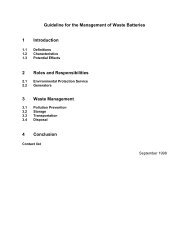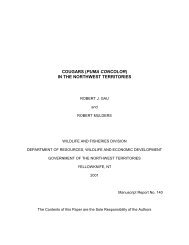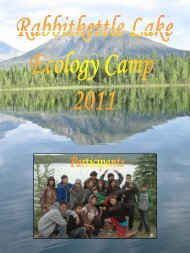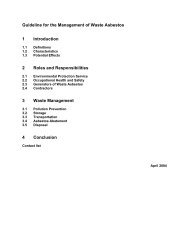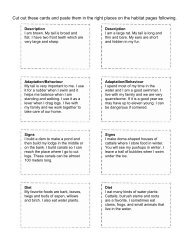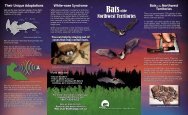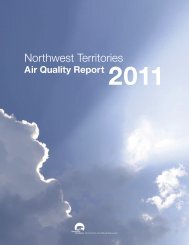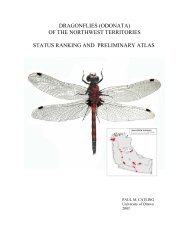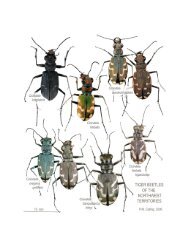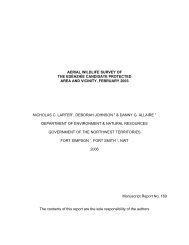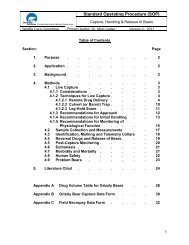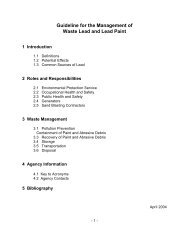Boreal Caribou Conservation in the NWT - Environment and Natural ...
Boreal Caribou Conservation in the NWT - Environment and Natural ...
Boreal Caribou Conservation in the NWT - Environment and Natural ...
You also want an ePaper? Increase the reach of your titles
YUMPU automatically turns print PDFs into web optimized ePapers that Google loves.
Photo by Gordon Court<br />
D. Interaction with O<strong>the</strong>r Wildlife Species<br />
In every community <strong>in</strong> <strong>the</strong> sou<strong>the</strong>rn portion of <strong>the</strong> <strong>NWT</strong> where<br />
discussions about boreal caribou were held, residents reported<br />
that new species are appear<strong>in</strong>g <strong>and</strong> <strong>the</strong>y expressed concerns<br />
about <strong>the</strong> <strong>in</strong>teractions of <strong>the</strong>se new species with exist<strong>in</strong>g<br />
wildlife. New species can br<strong>in</strong>g new parasites <strong>and</strong> diseases.<br />
Local knowledge suggests <strong>the</strong> range of boreal caribou <strong>in</strong><br />
<strong>the</strong> <strong>NWT</strong> has not significantly changed over time, with <strong>the</strong><br />
exception of a few localities where densities of boreal caribou<br />
have decreased. These <strong>in</strong>clude areas where wood bison were<br />
<strong>in</strong>troduced (Mackenzie Bison Sanctuary <strong>and</strong> surround<strong>in</strong>g areas)<br />
or where boreal caribou were over-hunted (e.g. P<strong>in</strong>e Po<strong>in</strong>t<br />
area). However, community residents consistently said <strong>the</strong>re are<br />
def<strong>in</strong>ite <strong>in</strong>teractions between boreal caribou <strong>and</strong> o<strong>the</strong>r wildlife<br />
(beavers, wood bison, muskoxen, wolves <strong>and</strong> bears) that are<br />
chang<strong>in</strong>g <strong>the</strong> local caribou distributions <strong>in</strong> many areas.<br />
Action 15<br />
Confirm <strong>the</strong> applicability of identified effects from o<strong>the</strong>r wildlife<br />
species <strong>in</strong> o<strong>the</strong>r jurisdictions for <strong>the</strong> <strong>NWT</strong>.<br />
Action 16<br />
Track trends of o<strong>the</strong>r ungulates <strong>and</strong> carnivores (for example:<br />
moose, white-tailed deer, beaver, bison, muskox, wolves, coyotes,<br />
cougar, wolver<strong>in</strong>e <strong>and</strong> lynx) <strong>in</strong> boreal caribou ranges with<br />
<strong>in</strong>dustrial activity, or <strong>in</strong> each area identified <strong>in</strong> Action 7. Include<br />
<strong>in</strong>formation from communities <strong>and</strong> <strong>in</strong>dustrial companies.<br />
Action 17<br />
Monitor <strong>and</strong> identify boreal caribou diseases <strong>and</strong> parasites.<br />
12<br />
action plan for boreal woodl<strong>and</strong> caribou conservation <strong>in</strong> <strong>NWT</strong> | public discussion draft | october 2008



